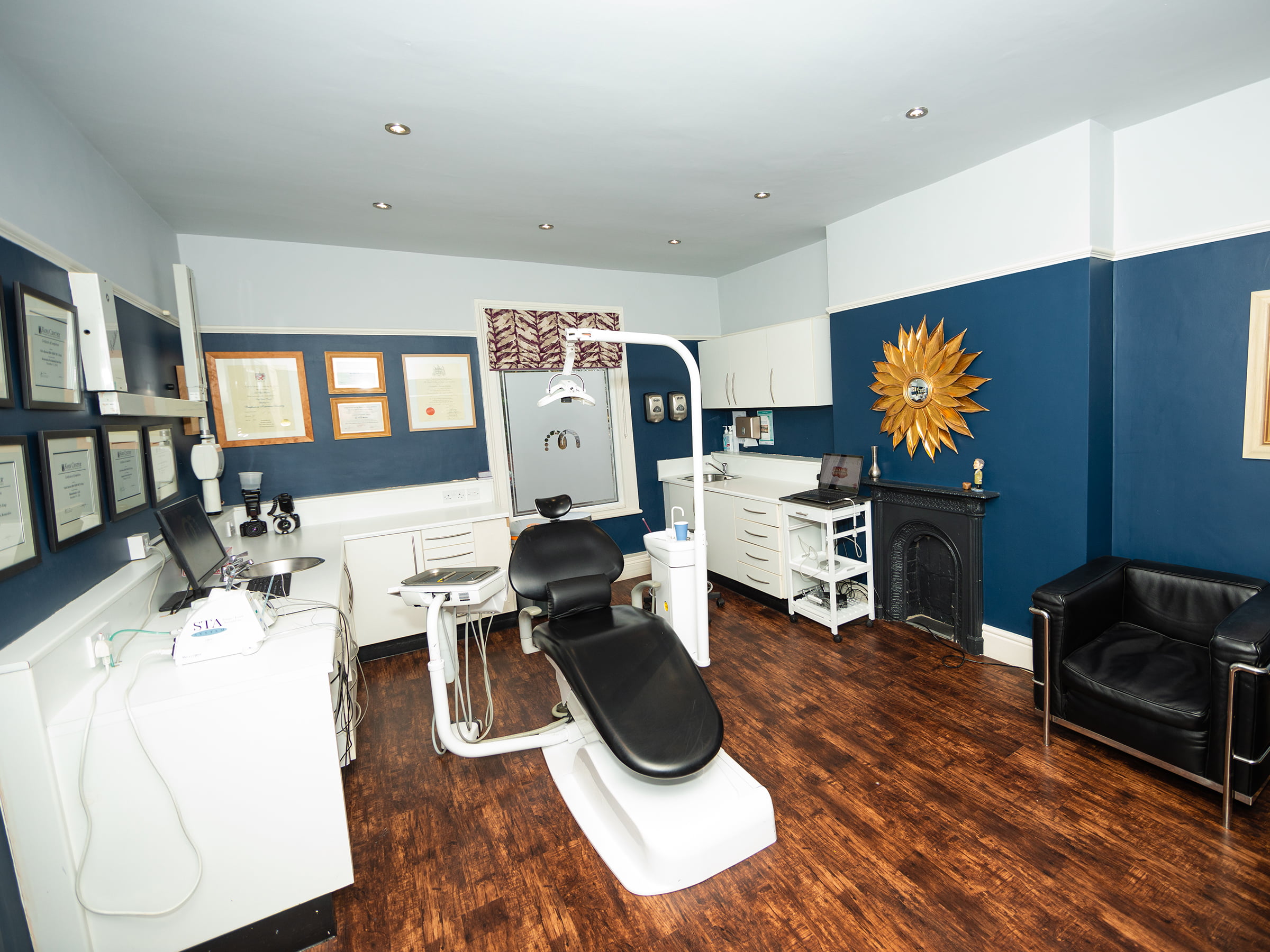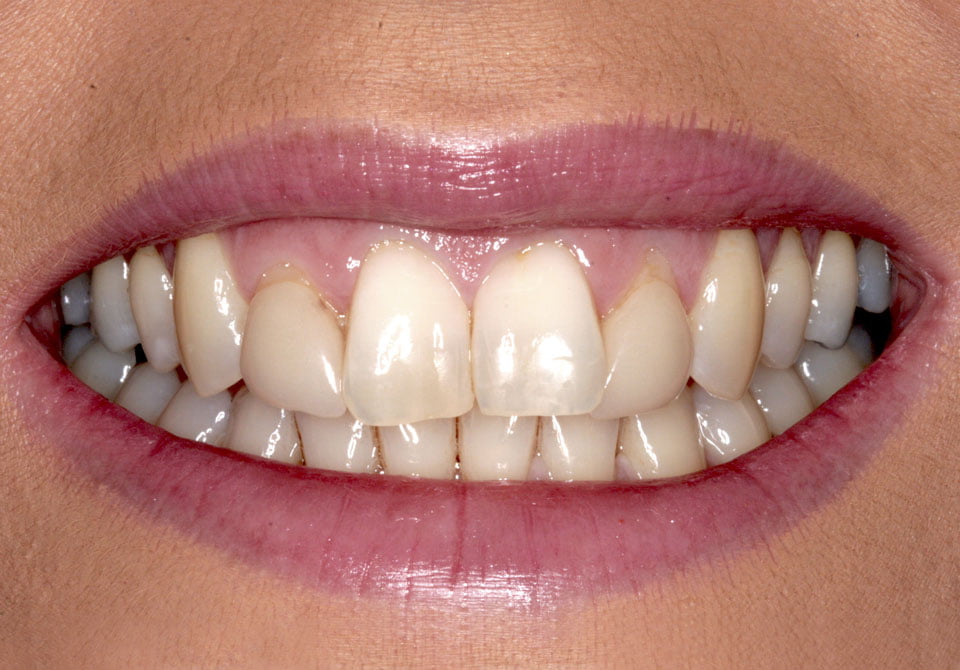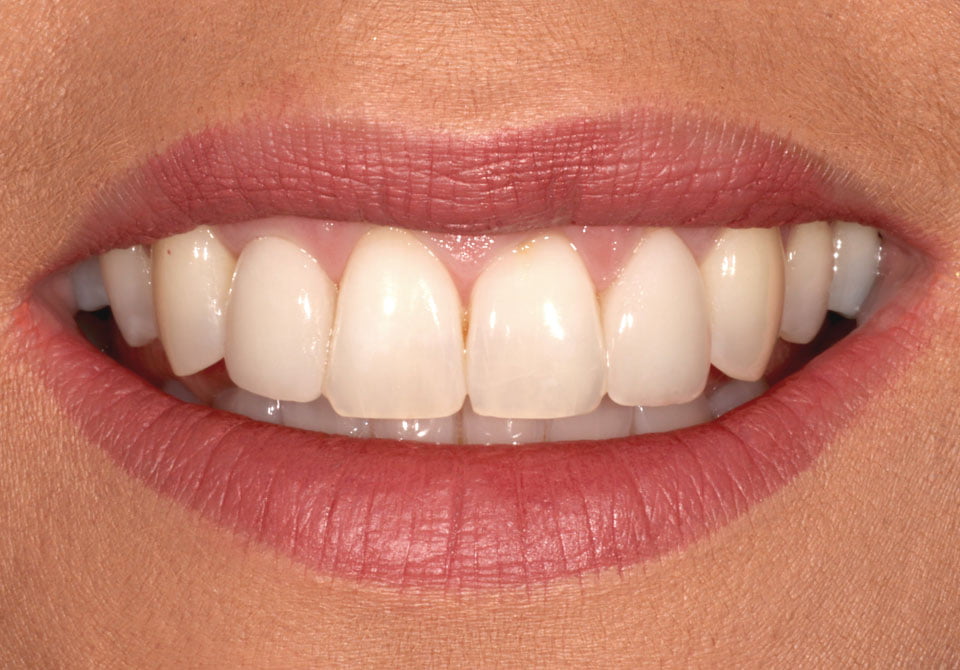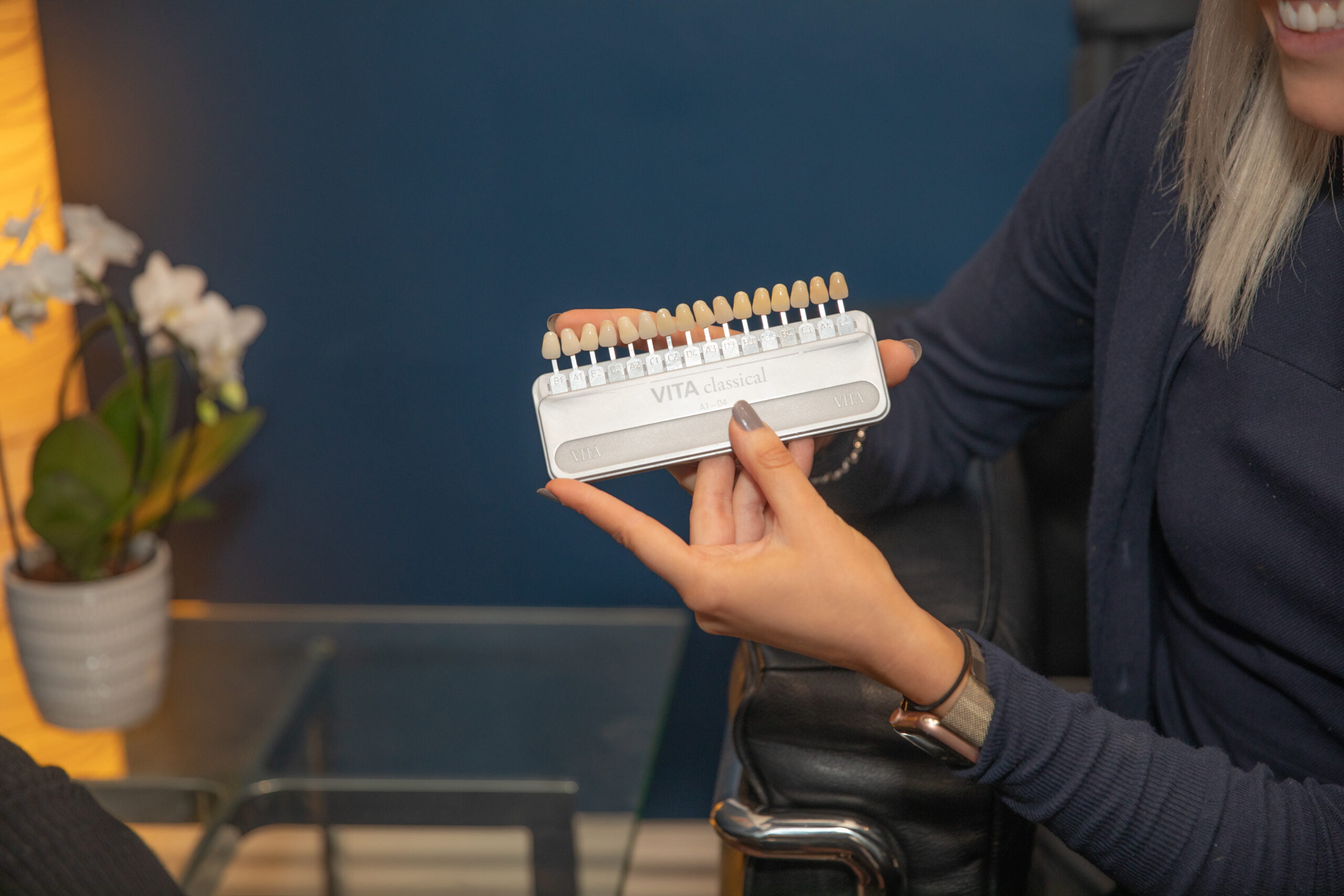What are veneers?
Veneers are thin tooth coloured shells, fitted to the front surface of your tooth to cover damage, mask discolouration or change the shape and colour of your smile. Veneers are strong, durable and a minimally invasive way to enhance a tooth, requiring only a small amount of tooth enamel to be removed in preparation.

Why should I choose veneers?
Veneers are a relatively fast way to change the appearance of your smile. Unlike orthodontic treatment, which needs a number of months to see results, or implants, which require healing time, we only need a couple of appointments to design and fit veneers.
We use modern materials to create the thinnest and strongest veneers possible, which need less of your natural tooth to be removed and create a beautiful finish.
What are the benefits of veneers?

Aesthetic
Veneers are incredibly natural looking. They can be colour matched to your existing teeth to blend perfectly into your smile, or used to change the colour of multiple teeth.
Secure
Strong dental adhesive is used to ensure your veneer is secure, stable and durable. When treated with care, they can last for many years.
Minimally invasive
We use advanced modern materials which mean only a tiny amount of tooth preparation is needed for us to fit veneers.
Comfortable
The innovative design process and precise scans and images ensure your veneer is as thin as possible, fitting comfortably onto your tooth.
Any questions?What does the treatment involve?




-
Consultation
At your initial appointment, we check your teeth and gums are healthy and suitable for veneers, and give you the chance to ask any questions about the treatment. -
Preparation
We prepare your tooth for the veneer by removing a tiny layer of tooth structure. In some cases, we may not have to remove any enamel at all. We take impressions of your teeth so your final veneers can be made, and fit temporary ones to protect your teeth between appointments. -
Fitting
When your veneers are ready, we check the fit, shape and shade are exactly as envisioned and that you are completely happy. We remove the temporary veneers and fit your final ones securely in place using strong dental adhesive. -
Treatment complete!
Your treatment is now complete! We give you some tailored advice on how to look after your veneers and leave you to enjoy showing off your new and improved confident smile.



Treatment results


Before treatment
This patient had old, failing ceramic veneers in place that needed replacing.
After treatment
Gum contouring was carried out prior to replacing the old veneers to lift the necks of the teeth in order to create more harmonious proportions in the patient’s smile.
See more resultsFrequently asked questions
-
What material is in a veneer?
Veneers are made of very thin tooth-coloured ceramic material.
-
What are the benefits of having a veneer?
- Veneers can change the size, shape and colour of teeth.
- Veneers are ceramic and will not stain.
- Veneers remove minimal tooth structure and are the most conservative ceramic restoration.
-
What are the risks of having a veneer?
In having a veneer, some inherent risks exist both to the tooth and to the veneer itself. The risks to the tooth are:
- Preparation for a veneer permanently alters the tooth underneath the veneer.
- If the cement seal at the edge of the veneer is lost, decay may form at the juncture of the veneer and tooth.
- Preparing for and placing a veneer can irritate the tooth and cause post-operative sensitivity which may last for up to 3 months.
- Teeth which have had veneers may need root canal treatment less than 1% of the time during the lifetime of the tooth.
The risks to the veneer are:
- Ceramic may chip over time.
- If the tooth needs a root canal treatment after the veneer is permanently cemented, the procedure may fracture the veneer and the veneer may need to be replaced.
-
What are the alternatives to veneers?
Alternatives to placing a veneer are to either leave the tooth as is or to place a composite restoration. Composite restorations remove decay but are limited because they will stain more and do not change the size and colour of teeth as well as veneers.
-
How can an existing bite affect a veneer?
Bite problems may lead to the veneer chipping or breaking.
-
Are there any post-treatment limitations once I have a veneer?
The veneer may have a good colour match with adjacent natural teeth when it is placed but less of a match as your natural teeth age. A veneer may chip or break if used for abnormal activities (e.g., biting fishing line, sewing thread, biting fingernails, opening bottles).


